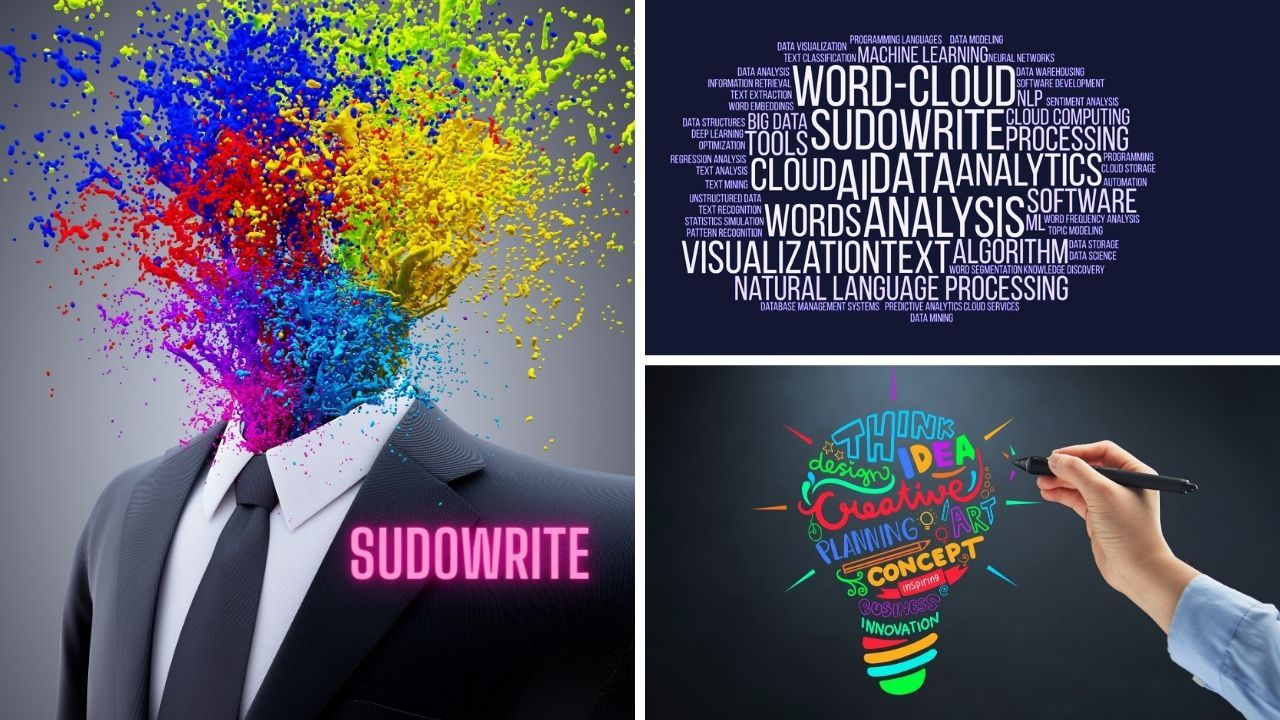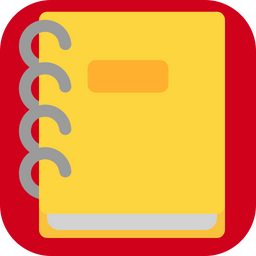Will AI replace copywriters? This query is no longer a thing of science fiction, but a stark reality we must face as advancements in AI technology encroach upon the realm of content creation.
The intricate dance between language, creativity, and technology is changing, and with it, the future of copywriting.
This article will explore the intersection of AI and copywriting, looking at the capabilities of current technologies, their potential future developments, and the indelible question of whether AI could ever truly replicate the human spark that ignites great copy.
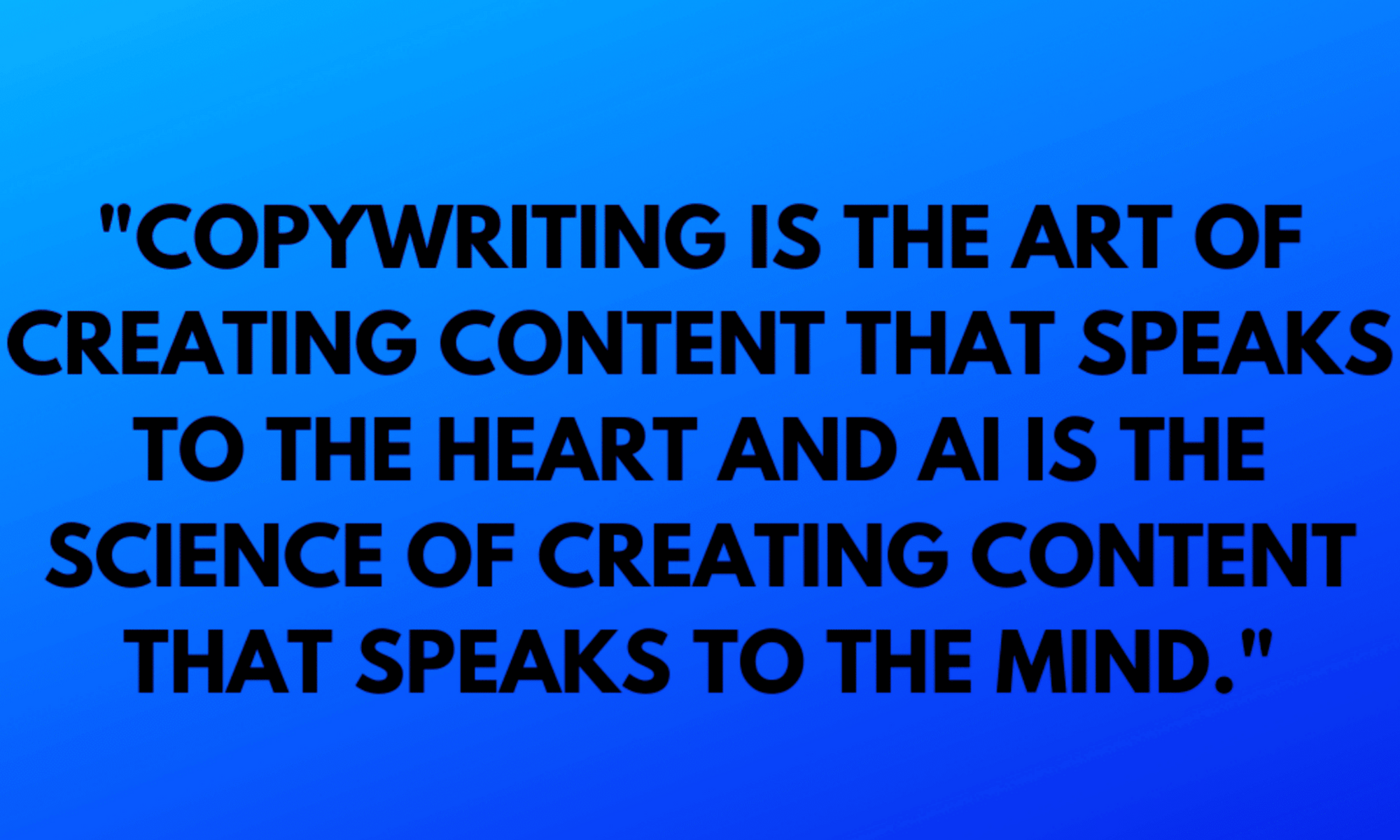
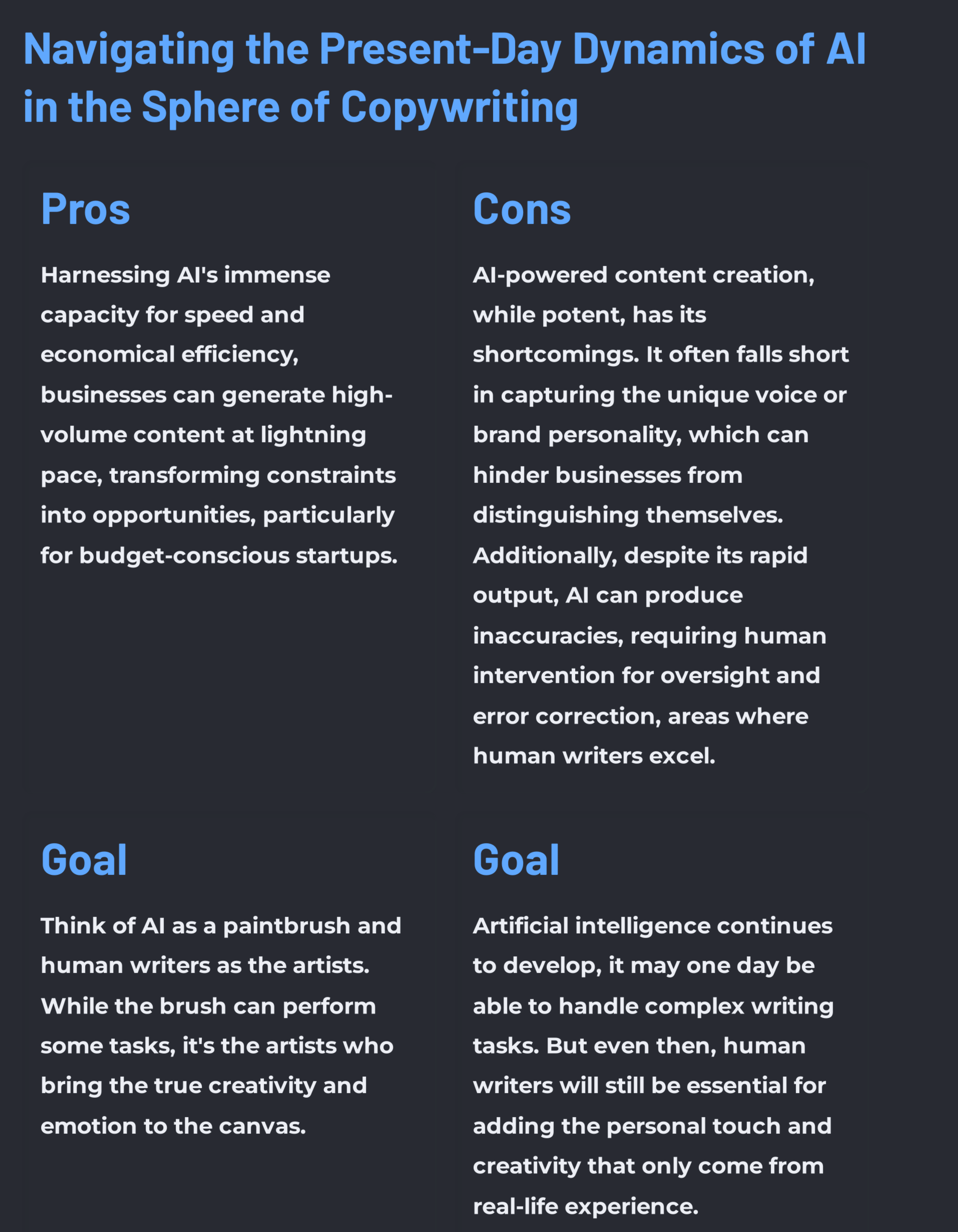

Navigating the current dynamics of AI in the world of copywriting is a journey filled with fascinating insights and transformative potential. As we delve into this arena, we find that AI-fueled writing tools, are already making waves by aiding in tasks ranging from improving spelling and grammar to brainstorming headings and creating article outlines.
However, it's crucial to understand that these tools are not replacements for human writers but rather, they function as powerful allies. The best way forward is a collaboration rather than a competition, where AI can help us write faster and better. It's about harnessing the potential of AI to save time, generate fresh ideas, and even offer solutions for writer's block.
Yet, AI is not without limitations. While it can suggest improvements and produce impressive outputs, it can't deliver flawless text that's ready to be published. The output still requires a human touch, from fine-tuning the content to ensuring it reflects the writer's unique voice.
In essence, the present-day dynamics of AI in copywriting is all about leveraging the strengths of AI to enhance the writing process, while also recognizing and working around its limitations. The goal isn't to replace copywriters with AI, but to create a synergy that allows for more efficient and creative writing experiences.
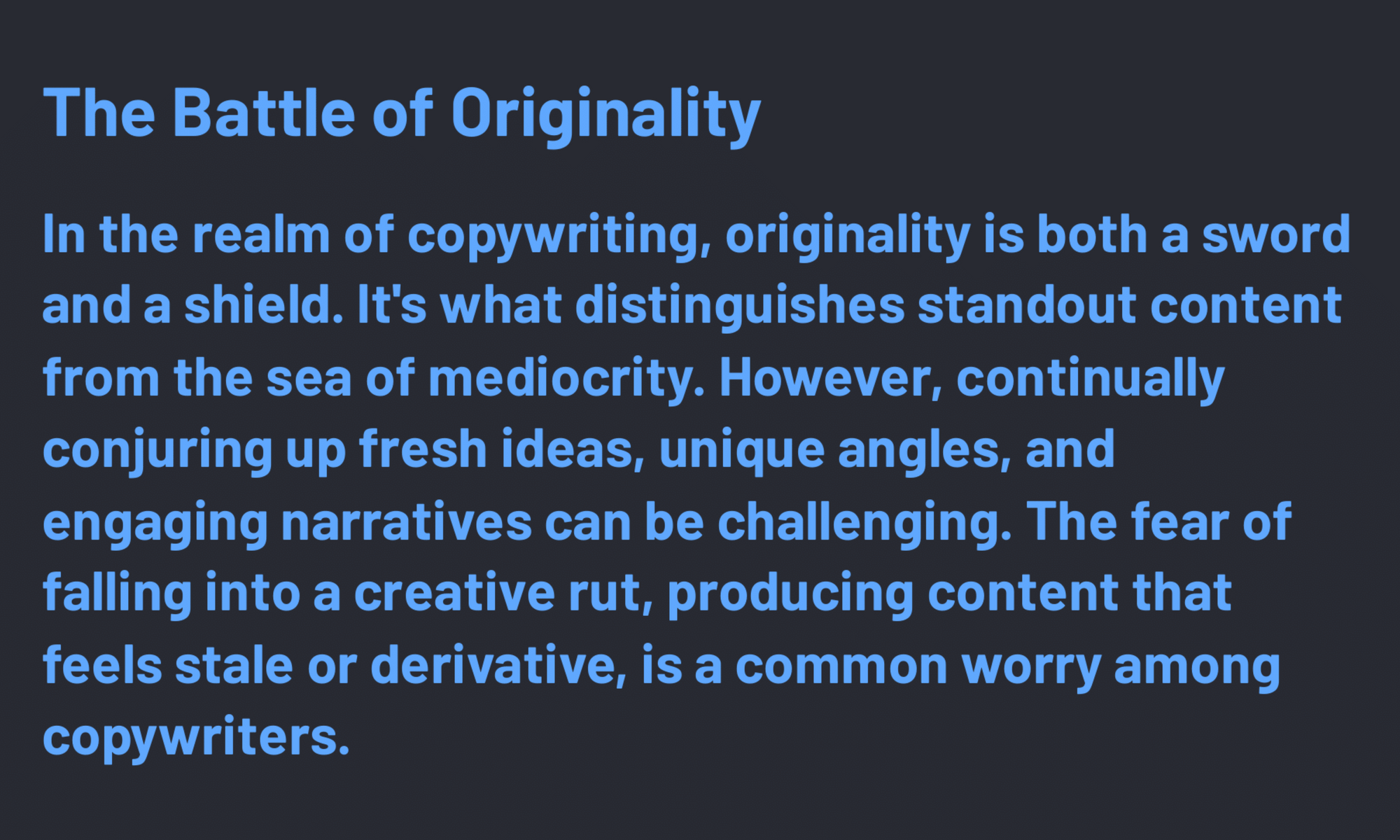
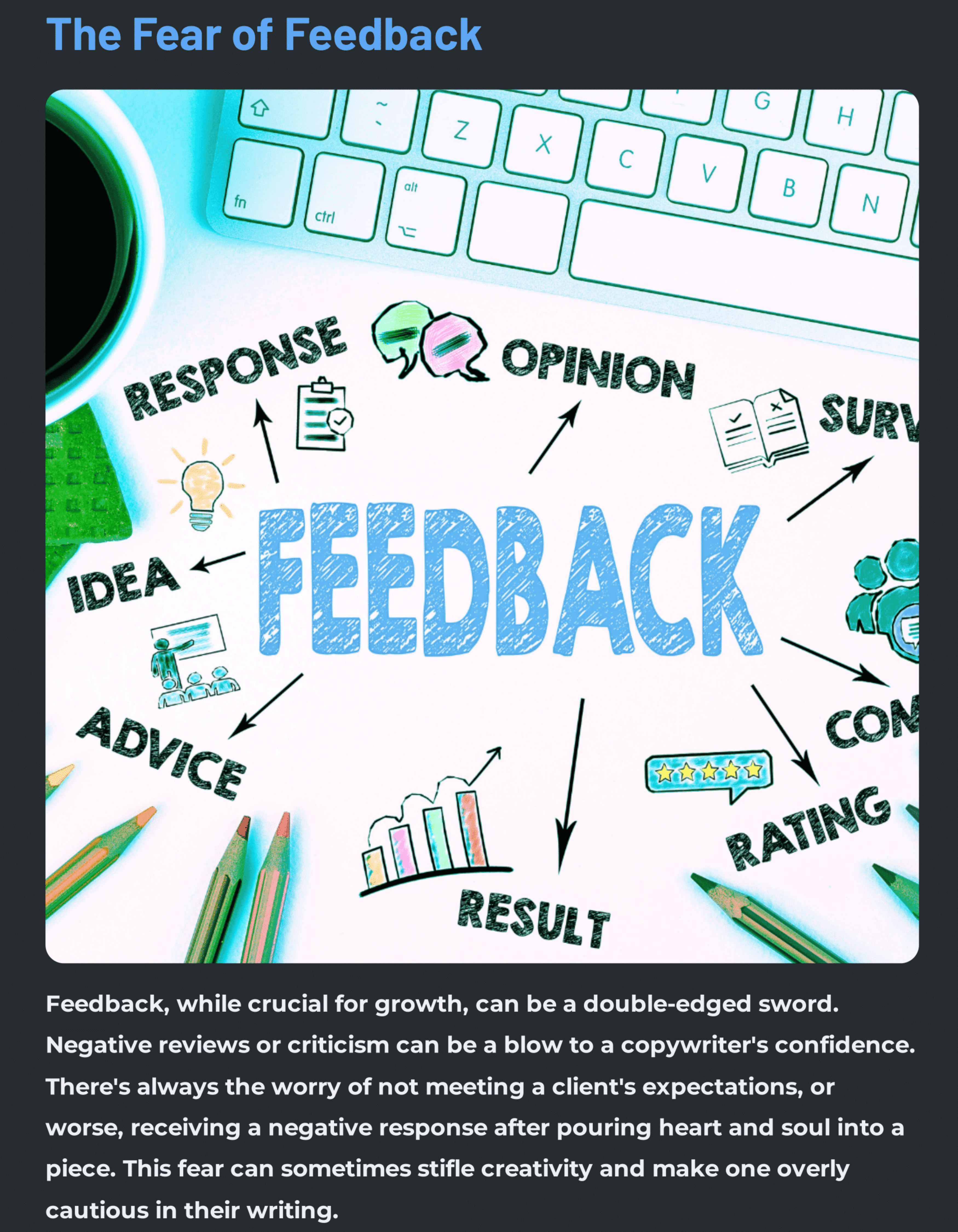
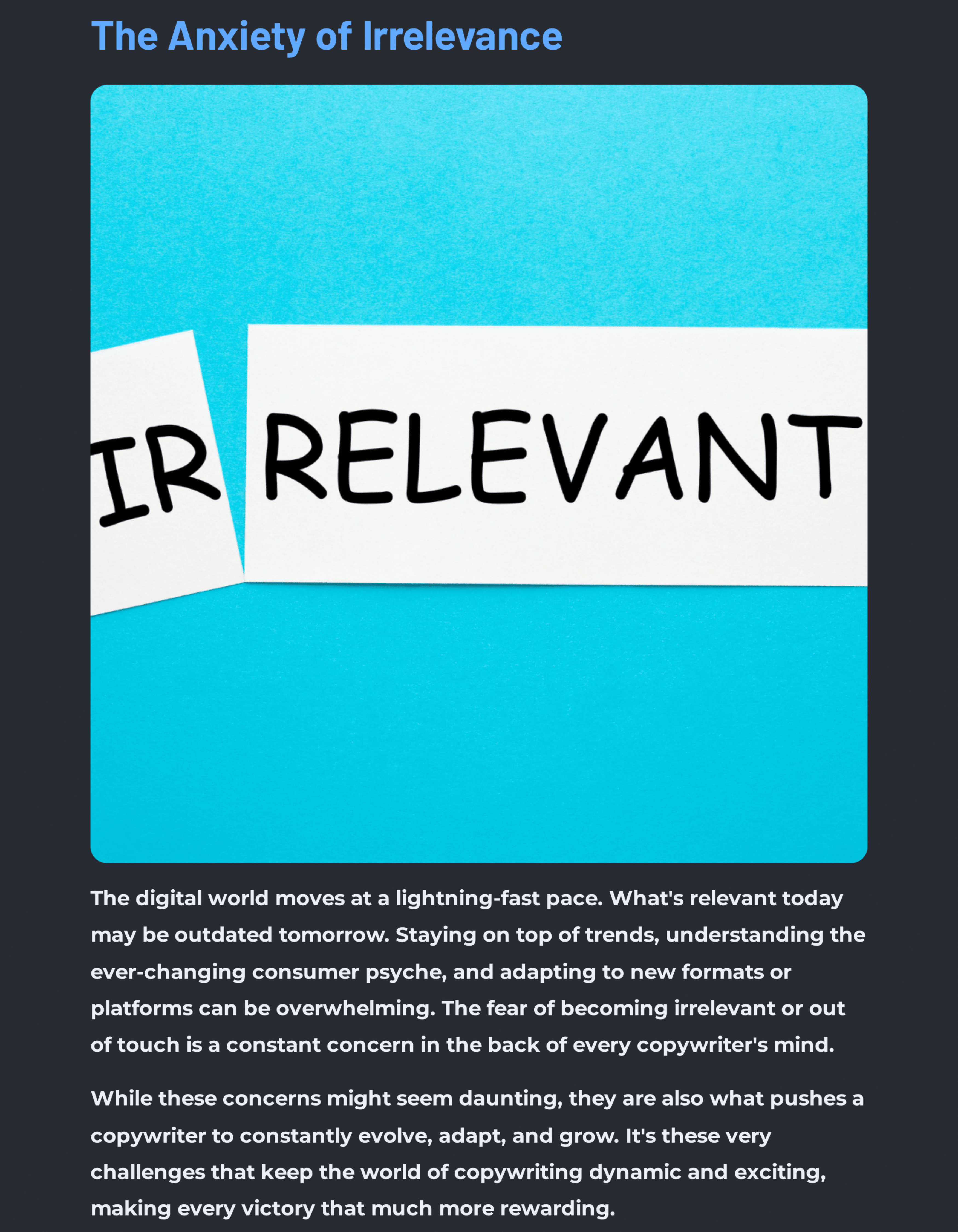
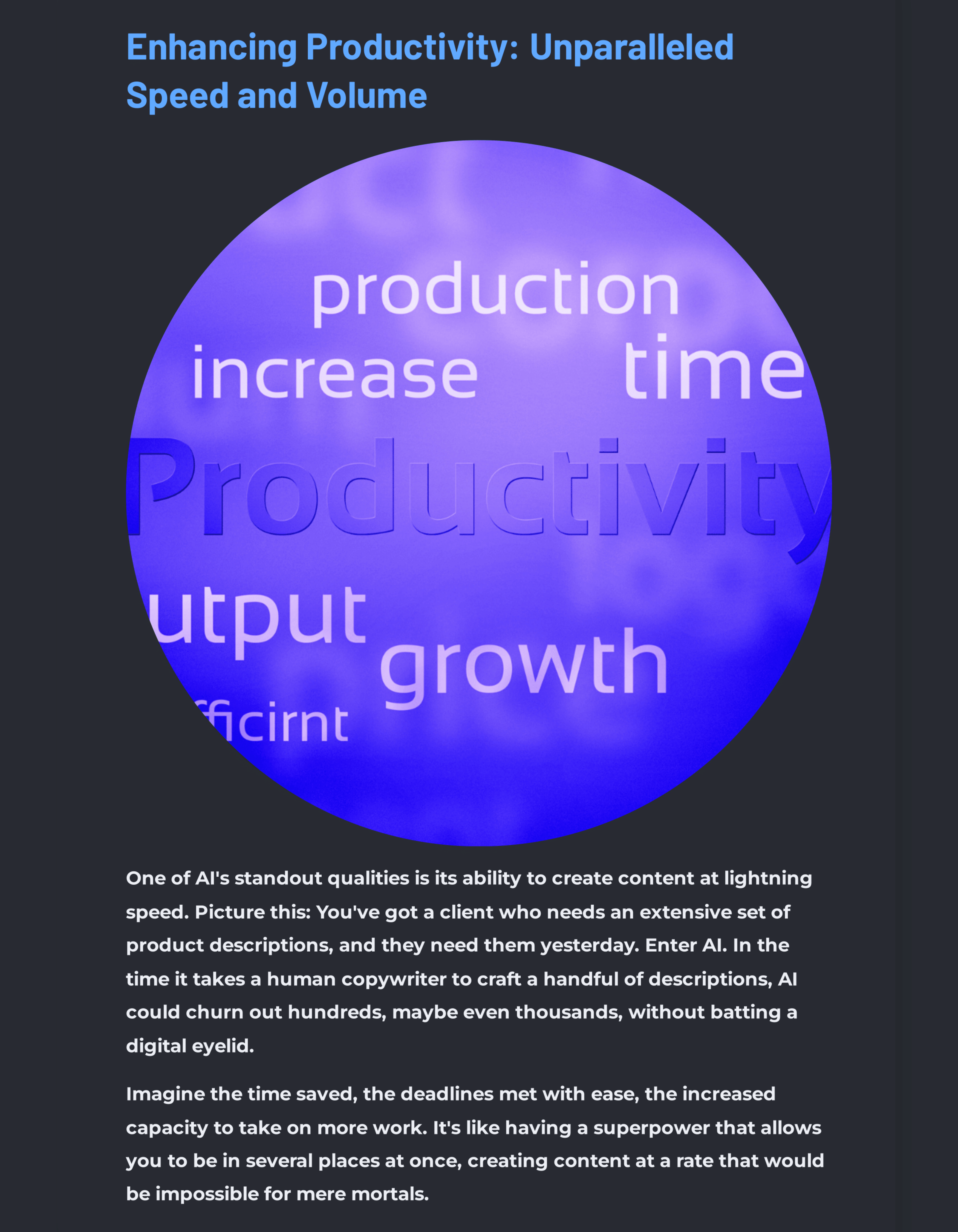
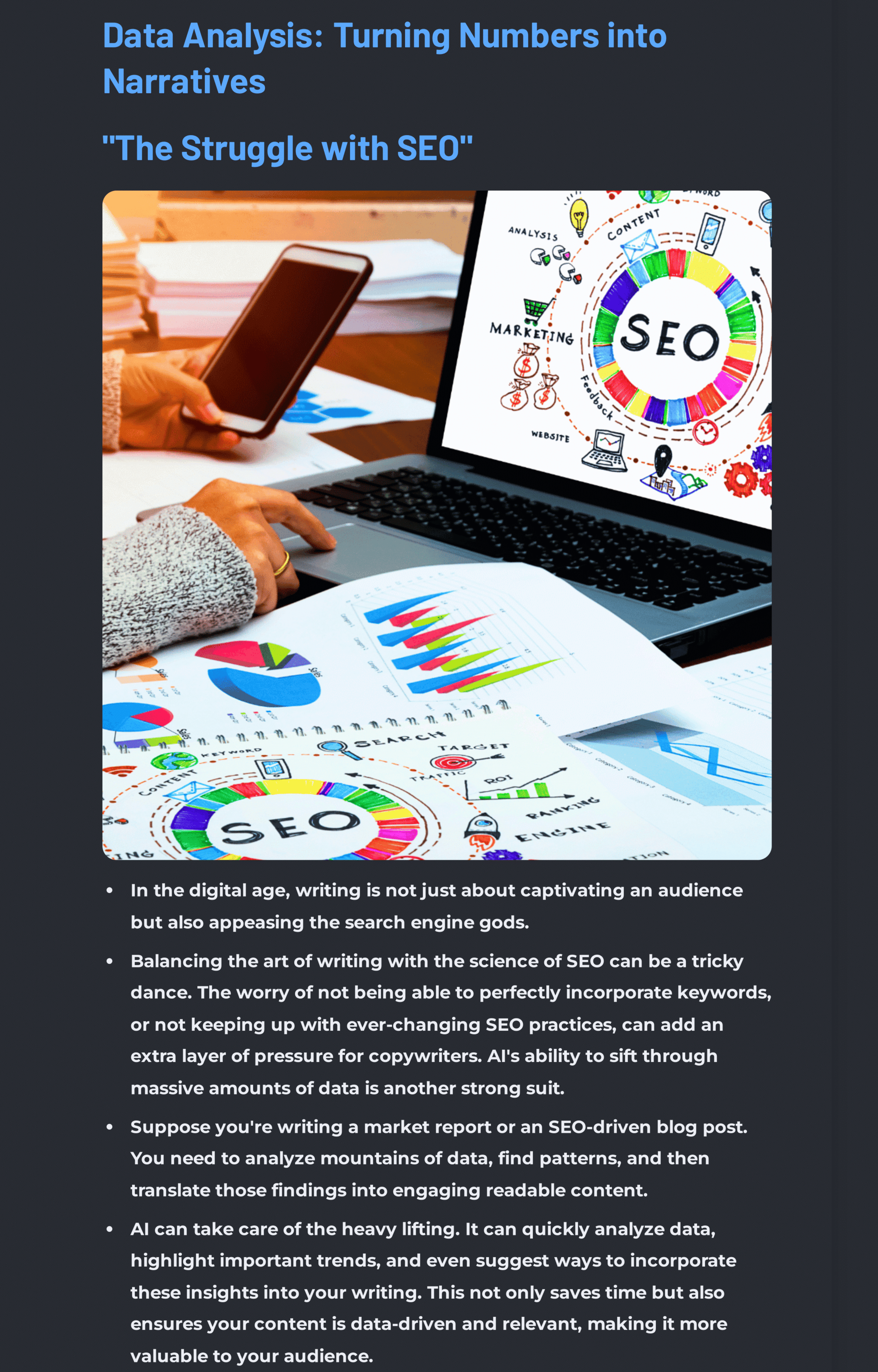
The intersection of data analysis, AI, and copywriting is an evolving field that offers a wide range of possibilities. AI-powered copywriting tools are increasingly being used to generate text that sounds as human as possible, and these tools have made substantial progress in recent years. They are not only capable of producing human-like text, but also can help writers to write faster and better, offering a useful tool for combating writer's block.
As for data analysis in AI and copywriting, AI tools are capable of analyzing the effectiveness of content by monitoring metrics such as user engagement and conversion rates. This data can then be used to refine and optimize future copywriting efforts. However, I was not able to find a detailed source explaining how data analysis specifically applies to AI in copywriting.
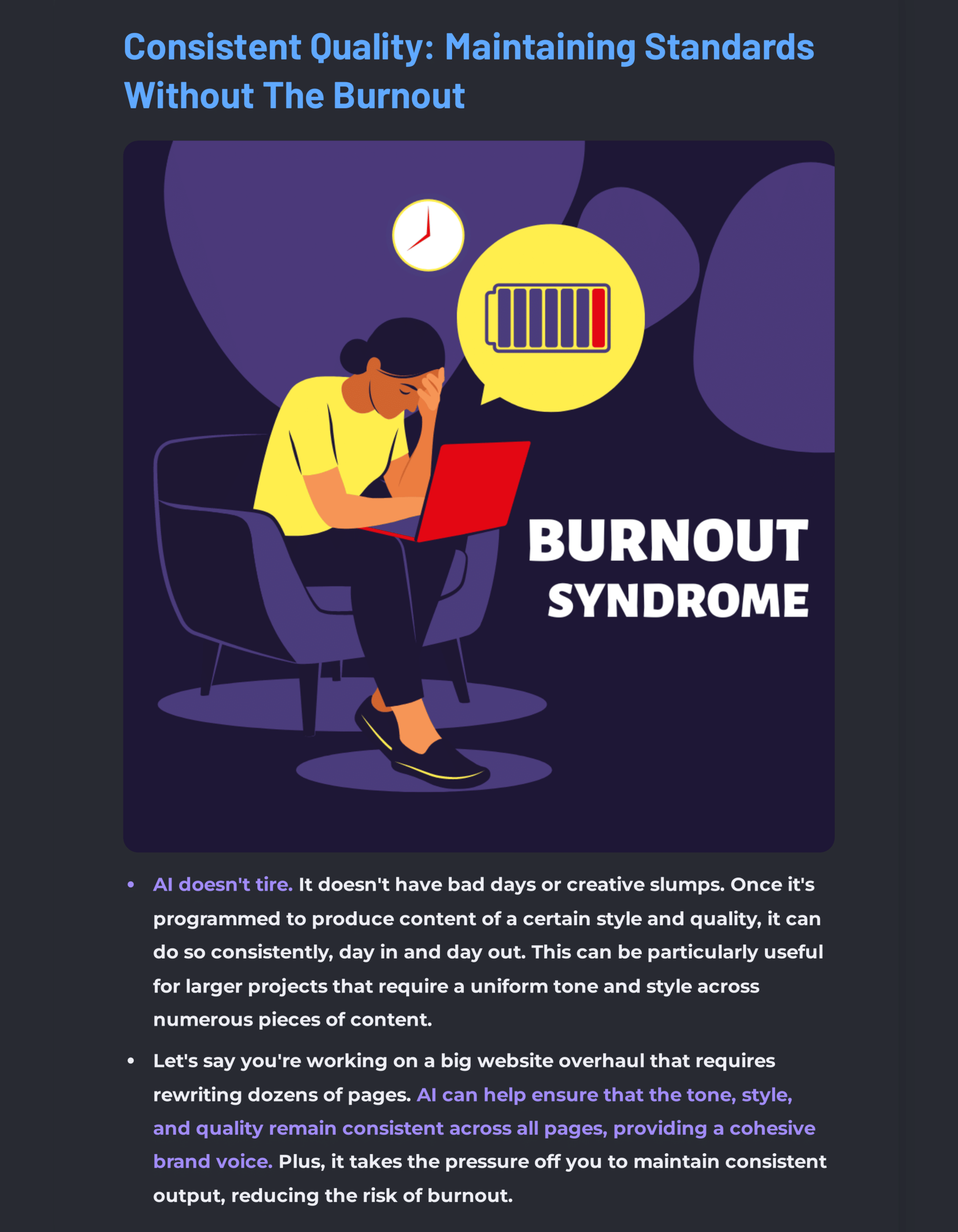
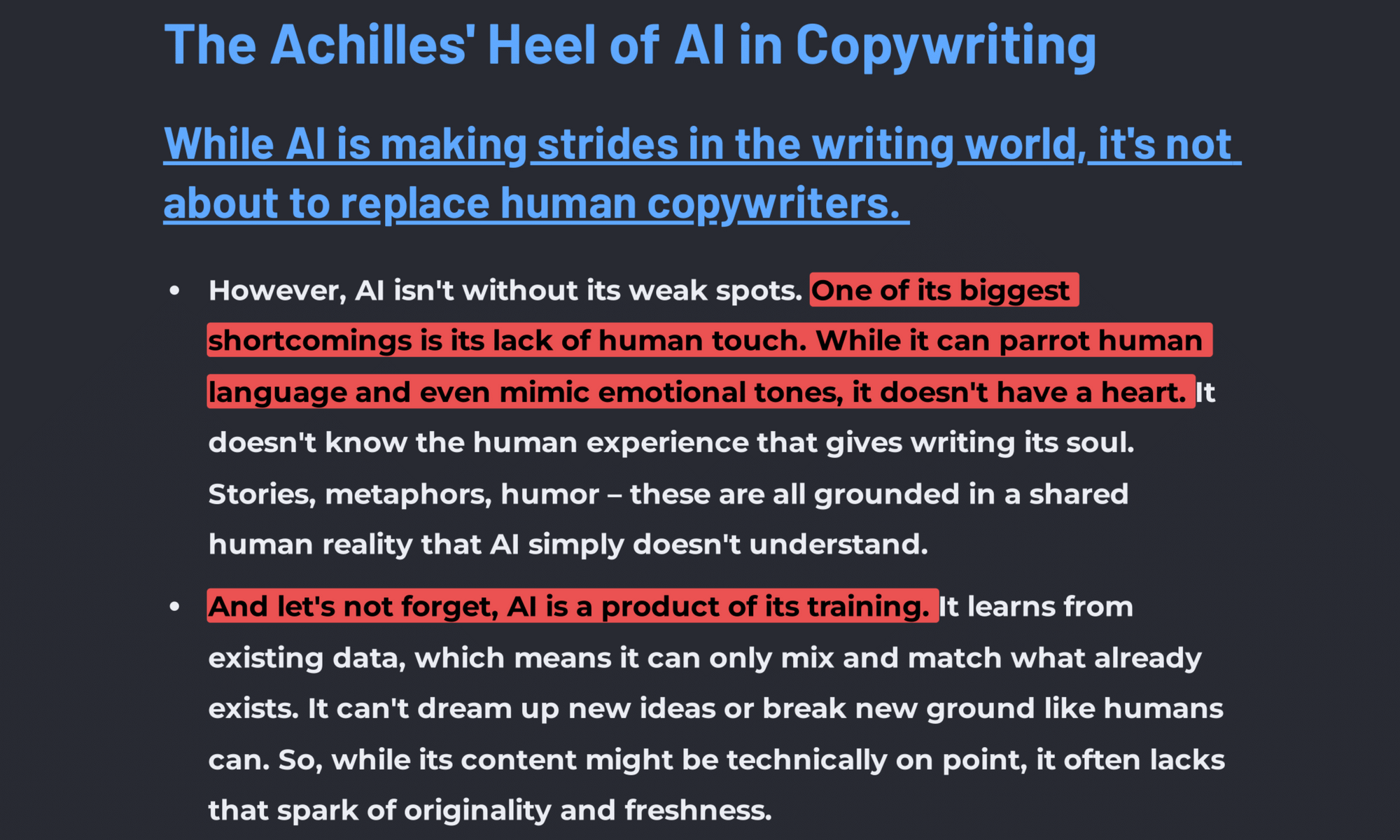
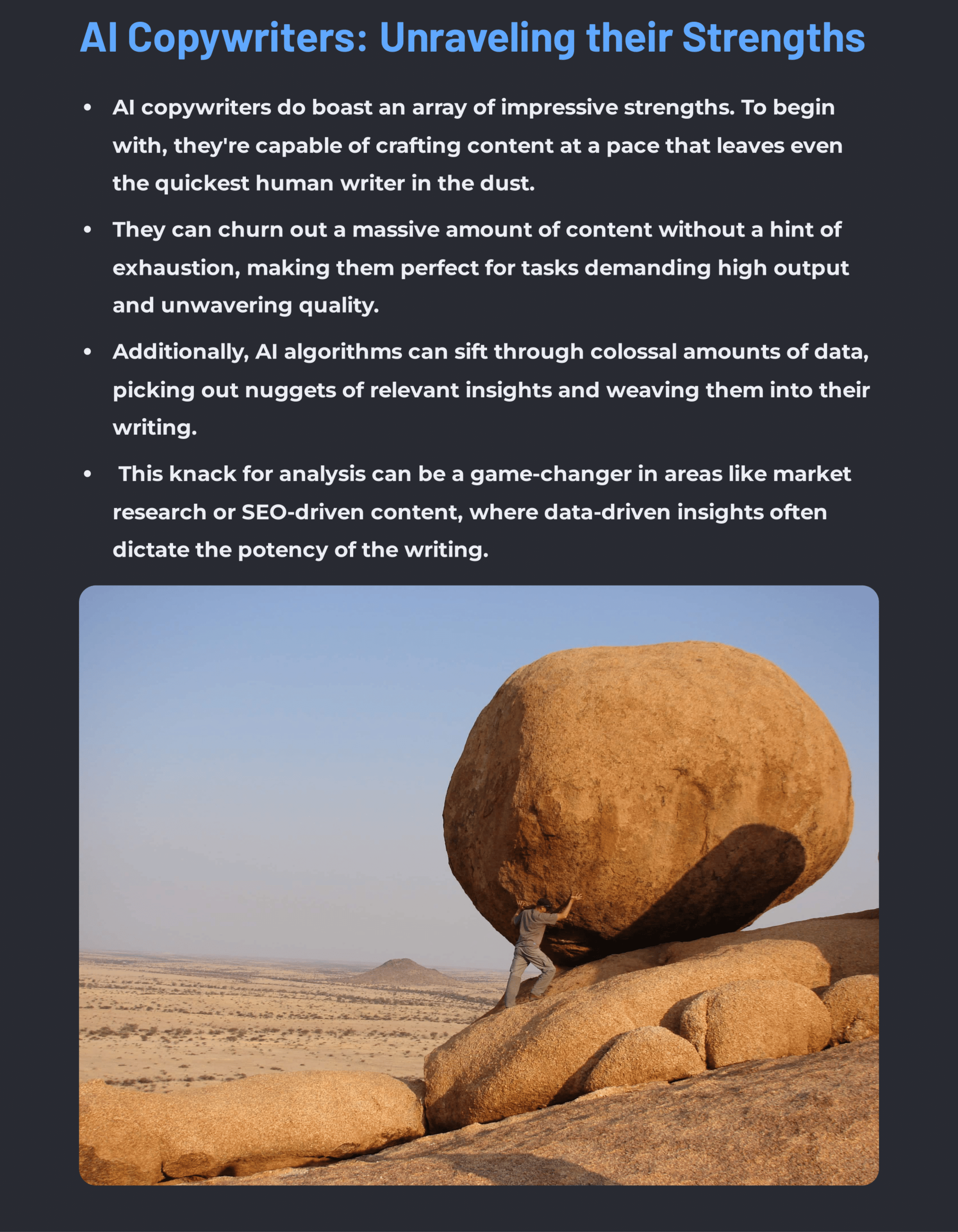
AI offers a multitude of strengths for copywriting, especially as it continues to evolve and refine its capabilities. Here are some of the most significant advantages:
Efficiency and Speed: AI can generate text quickly, helping to speed up the writing process. It can produce a large volume of content in a relatively short amount of time, making it a powerful tool for businesses and individuals who need to produce content regularly.
Idea Generation: AI copywriting tools can provide suggestions for headlines, introductions, and other elements of a piece, serving as a source of inspiration when you're feeling stuck. This can be particularly useful during brainstorming sessions.
Grammar and Spelling Assistance: Tools like Grammarly and Hemingway Editor use AI to identify and correct grammatical and spelling errors, enhancing the overall quality of the text.
Scalability: AI tools can handle a large volume of tasks simultaneously. This means that as your content needs grow, AI can scale with you, providing consistent assistance regardless of the volume of work.
Data Analysis: Some AI tools can analyze user engagement and other metrics to gauge the effectiveness of the content. This data-driven approach can guide future copywriting efforts, helping to create content that resonates with the audience and achieves desired results.
Addressing Writer’s Block: AI copywriting tools offer solutions for writer's block by providing suggestions and ideas, which can help jumpstart the creative process.
However, it's important to note that while AI provides numerous benefits, it's currently not a substitute for human writers. AI lacks the ability to fully understand context and nuance, and it can't replicate the unique voice of a human writer. As such, while AI can assist in the writing process, human oversight and editing are still necessary to ensure the quality and effectiveness of the content.
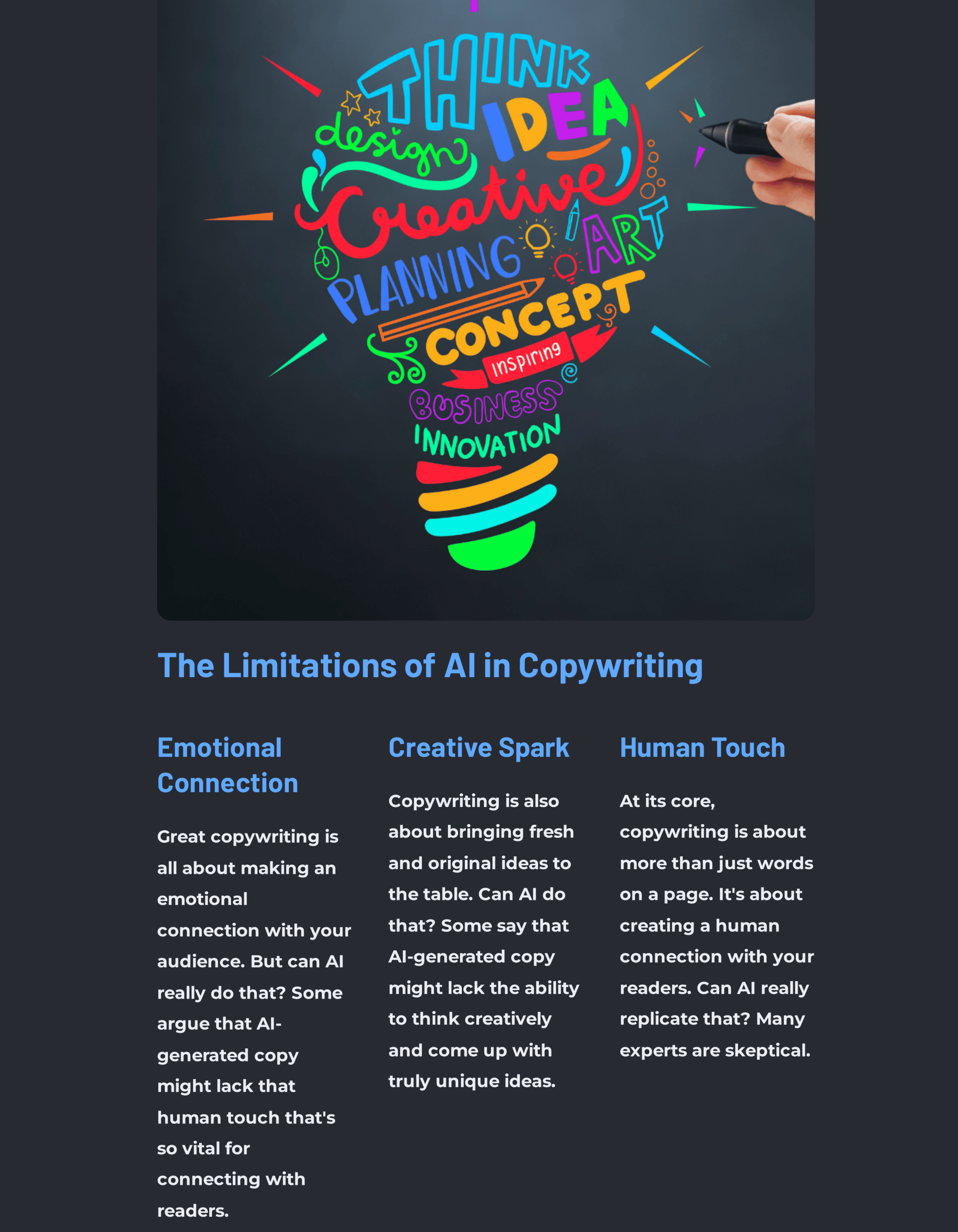
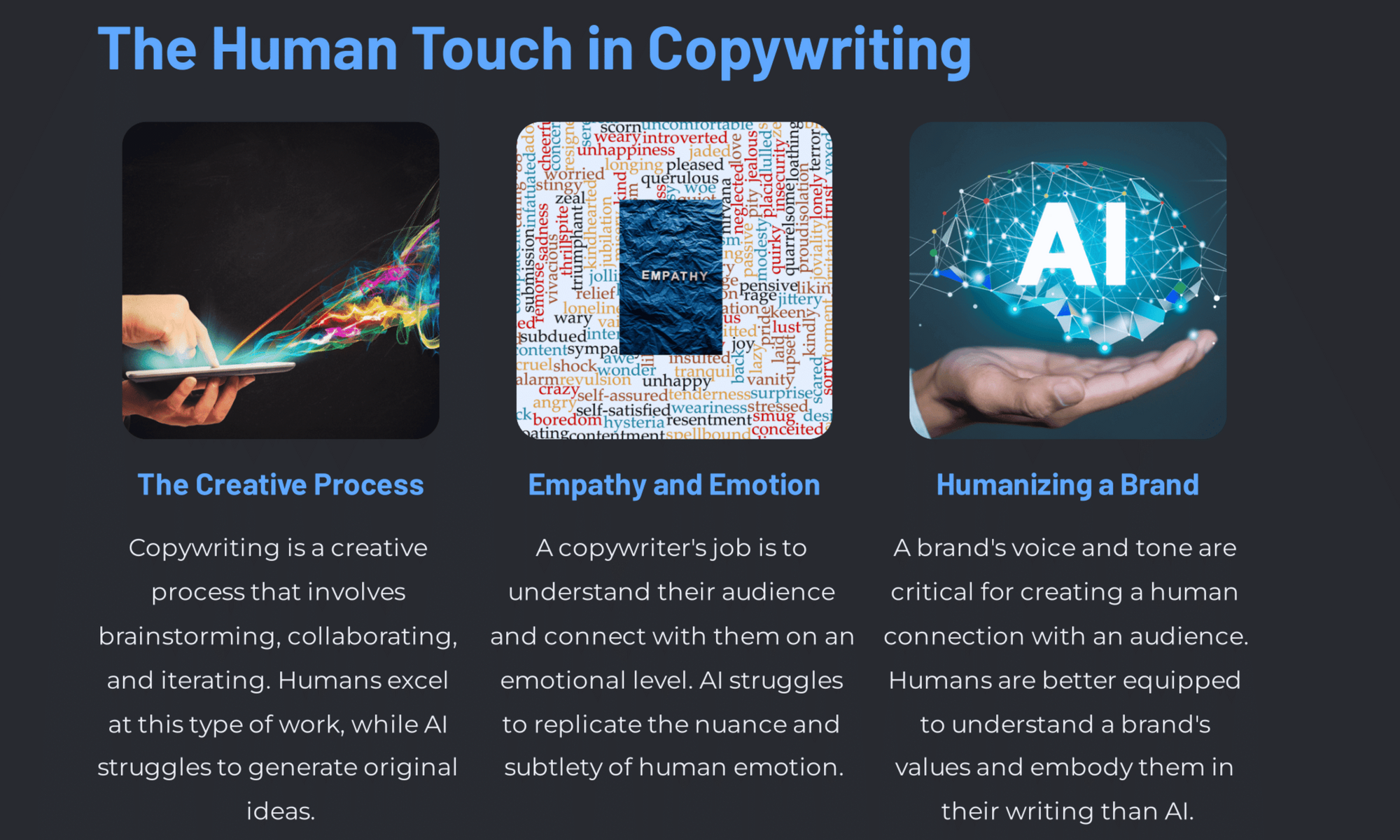

AI will enhance the work of human writers, freeing them to focus on the creative and emotional aspects of copywriting that AI cannot replicate.
Thank you for reading this article and happy writing!
Your friend,
Karie
If you would like to see how AI works and want to try one out checkout my article below!
